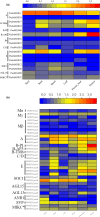Draft genome of the famous ornamental plant Paeonia suffruticosa
- PMID: 32551041
- PMCID: PMC7297784
- DOI: 10.1002/ece3.5965
Draft genome of the famous ornamental plant Paeonia suffruticosa
Abstract
Tree peony (Paeonia Sect. Moutan) is a famous ornamental plant, with huge historical, cultural, and economic significance worldwide. In this study, we reported the ~13.79 Gb draft genome of a wide-grown Paeonia suffruticosa cultivar "Luo shen xiao chun," representing the largest sequenced genome in dicots to date. Phylogenetic analyses based on genome sequences demonstrated that P. suffruticosa was placed as sister to Vitales, and they together formed a clade that was sister to Rosids, weakly supporting a relationship of ((Saxifragales and Vitales) and Rosids). The identification and expression analysis of MADS-box genes based on the genome assembly and de novo transcriptome assembly of P. suffruticosa revealed that the function of C class genes was restricted in flower development, which might be responsible for the stamen petalody in tree peony cultivars. Overall, the first sequenced genome in the family Paeoniaceae provides an important resource for the origin, domestication, and evolutionary study as well as cultivar breeding in tree peony.
Keywords: Comparative genomics; MADS‐box; Paeonia suffruticosa; Tree peony; draft genome.
© 2020 The Authors. Ecology and Evolution published by John Wiley & Sons Ltd.
Figures



Similar articles
-
High-quality assembly and methylome of a Tibetan wild tree peony genome (Paeonia ludlowii) reveal the evolution of giant genome architecture.Hortic Res. 2023 Nov 10;10(12):uhad241. doi: 10.1093/hr/uhad241. eCollection 2023 Dec. Hortic Res. 2023. PMID: 38156287 Free PMC article.
-
Plastid Phylogenomics of Paeonia and the Evolution of Ten Flower Types in Tree Peony.Genes (Basel). 2022 Nov 27;13(12):2229. doi: 10.3390/genes13122229. Genes (Basel). 2022. PMID: 36553496 Free PMC article.
-
De novo sequencing of tree peony (Paeonia suffruticosa) transcriptome to identify critical genes involved in flowering and floral organ development.BMC Genomics. 2019 Jul 11;20(1):572. doi: 10.1186/s12864-019-5857-0. BMC Genomics. 2019. PMID: 31296170 Free PMC article.
-
Paeonia × suffruticosa (Moutan Peony)-A Review of the Chemical Composition, Traditional and Professional Use in Medicine, Position in Cosmetics Industries, and Biotechnological Studies.Plants (Basel). 2022 Dec 5;11(23):3379. doi: 10.3390/plants11233379. Plants (Basel). 2022. PMID: 36501418 Free PMC article. Review.
-
Oil-use Feature of Tree Peony Seed Oil and Its Application in Functional Food Field.Chem Biodivers. 2025 Apr 17:e202500431. doi: 10.1002/cbdv.202500431. Online ahead of print. Chem Biodivers. 2025. PMID: 40247429 Review.
Cited by
-
The Current Developments in Medicinal Plant Genomics Enabled the Diversification of Secondary Metabolites' Biosynthesis.Int J Mol Sci. 2022 Dec 14;23(24):15932. doi: 10.3390/ijms232415932. Int J Mol Sci. 2022. PMID: 36555572 Free PMC article. Review.
-
Responses of the tree peony (Paeonia suffruticosa, Paeoniaceae) cultivar 'Yu Hong' to heat stress revealed by iTRAQ-based quantitative proteomics.Proteome Sci. 2022 Dec 29;20(1):18. doi: 10.1186/s12953-022-00202-5. Proteome Sci. 2022. PMID: 36578066 Free PMC article.
-
Characteristics of PoVIN3, a Key Gene of Vernalization Pathway, Affects Flowering Time.Int J Mol Sci. 2022 Nov 13;23(22):14003. doi: 10.3390/ijms232214003. Int J Mol Sci. 2022. PMID: 36430482 Free PMC article.
-
Identification of differentially expressed miRNAs and their target genes in response to brassinolide treatment on flowering of tree peony (Paeonia ostii).Plant Signal Behav. 2022 Dec 31;17(1):2056364. doi: 10.1080/15592324.2022.2056364. Plant Signal Behav. 2022. PMID: 35343364 Free PMC article.
-
Research advances in and prospects of ornamental plant genomics.Hortic Res. 2021 Apr 1;8(1):65. doi: 10.1038/s41438-021-00499-x. Hortic Res. 2021. PMID: 33790259 Free PMC article. Review.
References
LinkOut - more resources
Full Text Sources

